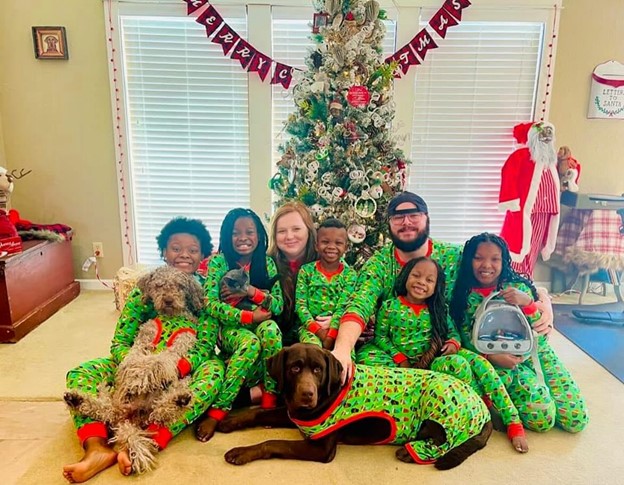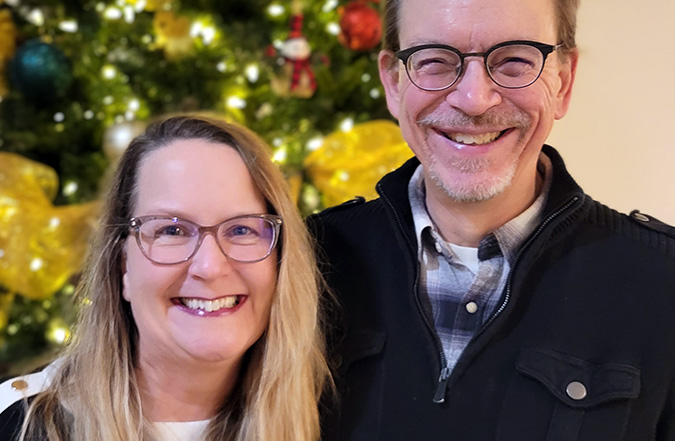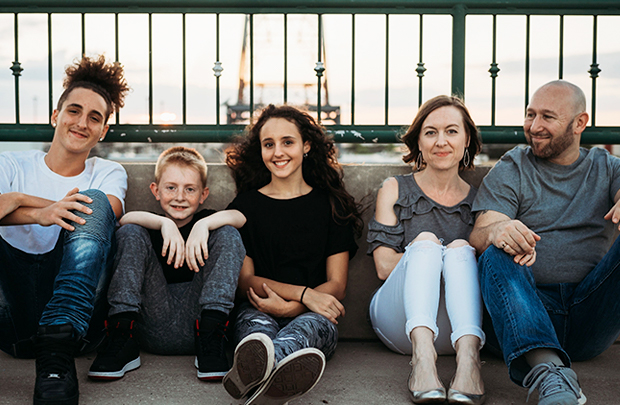
In October 2012, Stina Robison and her husband, Dav Gagner, didn’t have children yet, but they purchased a two-bedroom house in their small Vermont town with the intention of starting a family. They thought they might foster or adopt, but hadn’t made any firm plans.
One year later, their family grew in a way they couldn’t have imagined.
In October 2013, Stina, a middle school teacher, learned that two students in her class—Hannah and Emma—were about to be placed in foster care.
Stina knew the girls, their older brother, and their mother from school. And she worried about them.
Hannah had Down syndrome, and Stina wanted her to be in a home where people understood the condition. Stina had grown up with two siblings with Down syndrome, and felt that their home would be a good one for the girls.
“I called Dav at work and asked what he thought about volunteering as an emergency placement for the girls,” she said. Dav agreed, and the couple spent the evening filling out paperwork and transforming their home office into a bedroom the girls could share.
You will pull through into routines, you will have jokes and fun together. You will become a family. Click To TweetThe family bond deepens—and expands
The early days were both rewarding and challenging. For a long time, Hannah and Emma lived with the uncertainty of not knowing how long they’d be with their new foster parents.
Early on, Stina says, the girls were more agreeable than most young people, and didn’t express feelings. “As a teacher, I knew that wasn’t how kids act.”
After a while their feelings did come out—sometimes in disruptive ways. But no one gave up, and as the foster agreement was extended, Stina says that the family “got to the fun stuff.” Hannah showed a love for fashion, computer games, making music playlists, and playing basketball. Emma enjoyed caring for kids at their church nursery school, reading, and painting.
In July 2015, the girls’ little brother, Colin, came to live with them. Colin brought to the family an inventive spirit and a love of Legos, Star Wars, and Harry Potter. The two-bedroom house expanded to fit them all.
“We were not planning on a third child. But it was clear to us that Colin needed to be with his sisters,” said Stina.
Soon after Colin joined the family, Dav and Stina were able to make it permanent. They adopted Emma, Hannah, and Colin on February 9, 2017.
“It takes time—but it’s worth it”
Stina’s teaching career had prepared her for teens. But, she said, parenting teens who have been through a childhood like they had experienced is special.
“When they first joined our family, sometimes they needed little kid stuff and wanted to play like children who were younger than them would. So we tried to meet them where they were developmentally and not focus on their age,” Stina said.
Over time, the family has come together and thrived with support from counselors, a pediatrician, and a great church community, says Stina. They’ve also learned from Stina and Dav’s parents.
“Routines are really important,” says Stina. “They are very busy kids, so between 8–9 p.m. is our family time—after sports, after play practice.” That’s when they all read a book aloud or we watch a show together.”
They also have a new member of the family: the children’s big brother, Caleb, 19, has moved in with them. Stina says that he has “a genius mind in a little boy soul.”
Stina says that the last five years have been a process of growing, learning, and experiencing the rewards of seeing the children—now 13, 15, and 17—heal from past trauma.
That’s the one message she wants other parents to hear.
“You will pull through into routines, you will have jokes and fun together. You will become a family.”


